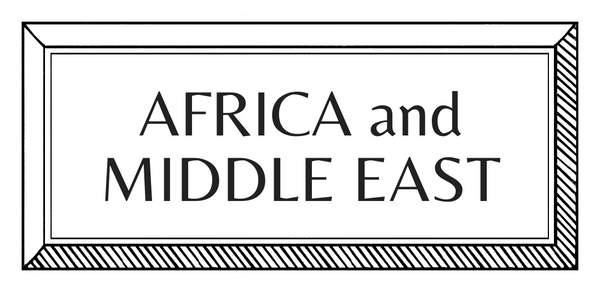MAKERS | EUROPE | FRANCE | WEAVING
Blaise Cayol | Basket Maker

Blaise Cayol at work © Didier Amadori
The quest to make something simple, everyday and humble, led Blaise Cayol to create singular baskets in his native Tavel, south west France. Abandoning his career as a graphic designer, Blaise sought out the three dimensionality and touch of the material world, discovering the beauty of willow and the handmade.
Blaise Cayol's early cultural influences have had a deep impact on his work today: an introduction to New Mexico as a child fostered a passion in prehistoric art and primitive cultures, and encouraged him to view basketry as a craft older than pottery.
Meanwhile, a lifelong dialogue with the Diné people has influenced his perspective, and Blaise now designs baskets that refer to man’s primary needs, with a particular focus on the anthropology of man’s relationship to nature.
How did you begin?
"I perpetuate the tradition of wicker basket weaving that almost disappeared in France after WWII. Willow basketry was a very important tradition in all Europe since forever and until the industrial period. Baskets were made for every function— for harvesting, storing, transporting, delivering, tidying, sheltering, traveling...
"Everything we have in cardboard, resin, polymer, plastic... was made in basketry. I like to continue making baskets in the academic tradition for these functional uses, bringing in a “peasant” basketry style. I use raw wicker, and add chestnut, hazelnut and larch wood to the structures. Through my work, I pursue a contemporary form of expression with the goal of sparking our emotions by weaving natural materials."
How did you learn?
"Encouraged by relatives and friends who remembered the beauty of baskets from the past, I travelled throughout my own country to study and learn different techniques. For me, plaiting and weaving is the perfect opportunity to link craft excellence to a tradition of craftsmanship that goes back to times before pottery.
"For the past 27 years, my personal, self-taught training has provided broad possibilities to me by furthering basketry as a craft— in the application of weaving techniques to gardens and landscapes— and in workshops, where I conduct weaving classes in France, Italy, New Mexico, California and Colorado."
How do you plan, prepare and create?
"After 27 years, I now “control” my activity over the entire process. Since 2020 I have started a new adventure— the planting of a willow nursery, the construction of a new studio and the daily maintenance of 2 acres of forest dedicated to the plants that I can weave: willow, cottonwood, dogwood, Hazel, vitex, clematis, cane... "
Who or what most influences your work?
"Mother Nature definitely influences my work. And I am deeply inhabited and guided by the myth of emergence. Particularly the one rendered from oral tradition and written by Scott Momaday. The birth of the Kiowa people. This story has continued to move me ever since I read it over twenty years ago.
"I've had the honor and pleasure of meeting Scott on occasion and we've talked about it together, as well as exchanging letters on the subject. Then, since my first participation at the International Folk Art Market in Santa Fe, this rendez-vous pushed me to take my work to a higher level of quality and invention."
What does a typical day look like?
"[My] ideal typical day: from the house in a pick-up truck to the plantation where the workshop is located; I take a walk with the dog, light a fire and heat up a cup of coffee; get the wicker out of the water and start weaving at sunrise, listening to the green woodpeckers on the poplar trunks; I work on the baskets until late afternoon and meet up with my wife and children on the way home."
One more thing… A place or space that really inspires you?
"Ubaye Valley near the Italian border in the South French Alps and The Asse Valley, a little more to the south, where a part of my family is from and encourage me to make baskets. The mountains are amazing. It is two large valleys, with a beautiful mediterranean light. I used to harvest mountain willow there every year.
"Also, Navajo Mountain, south Utah, home to the Diné families we've known since I was 11. They too have given me a lot of inspiration and encouragement, and taught me about weaving. At the foot of their mountain, the landscape is breathtakingly peaceful and goes by the name of 'surprise valley'. It's a place where you quickly understand who you really are. In the same region, I also like to spend time in Canyon de Chelly and the Dinétah.
"Finally, the experience of summer corn dances in the pueblo villages of New Mexico continues to animate one of my reasons for living, since it's about considering all creation and giving thanks to it."

© Jim Arndt
Interview by Peter Speliopoulos
Images from Dario Fusaro, Jim Arndt and Didier Amadori



































